-
Pixar Engineers Leave to Build Real World Living Toys – ReadWrite
Pixar Engineers Leave to Build Real World Living Toys – ReadWrite
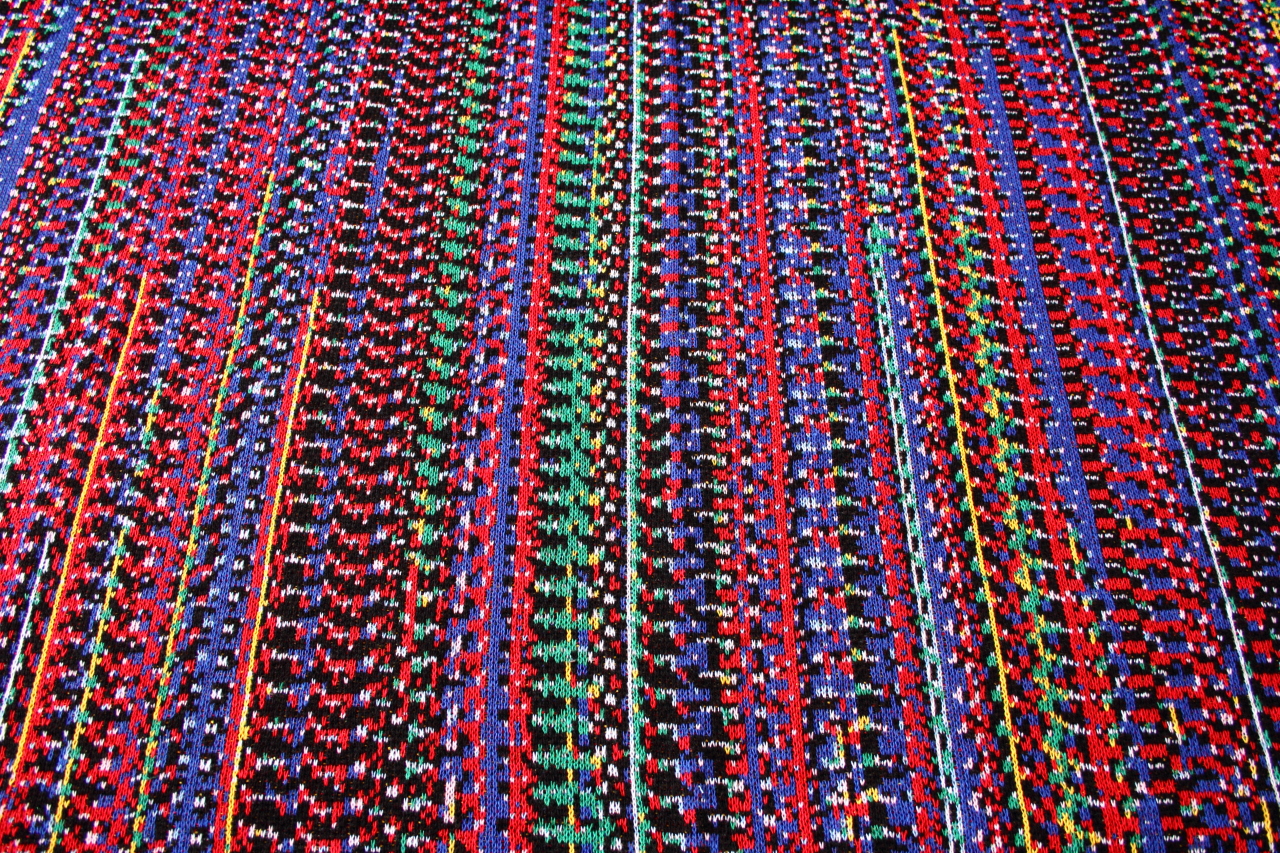
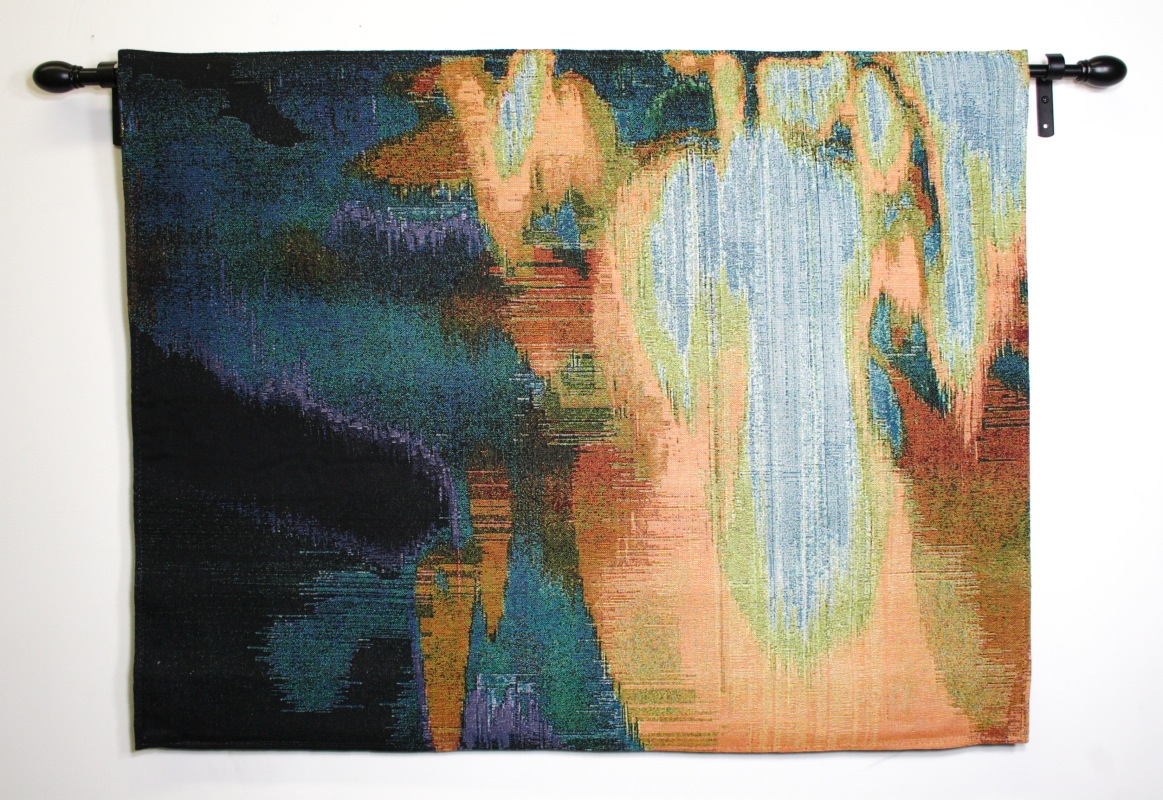 Philip Sterns is an artist who commissions blankets and tapestries woven in the USA with glitch-art patterns he generates with broken digital cameras. They're for sale! $200+
Philip Sterns is an artist who commissions blankets and tapestries woven in the USA with glitch-art patterns he generates with broken digital cameras. They're for sale! $200+
(via Kottke)
The sharing economy: All eyes on the sharing economy | The Economist
http://www.economist.com/news/technology-quarterly/21572914-collaborative-consumption-technology-makes-it-easier-people-rent-items
(via Instapaper)
[Atlantic Cities has been doing some pretty cool stuff lately. -egg]
What the Steamship and the Landline Can Tell Us About the Decline of the Private Car - Emily Badger - The Atlantic Cities
http://www.theatlanticcities.com/technology/2013/03/what-steamship-and-landline-can-tell-us-about-decline-private-car/4930/
(via Instapaper)
[Did I share this already? Also btw the Wallace essay referenced her is one of my favorites. -e]
- -
Consider the Lobster Claw: Why a Twist on an Arcade Classic Delights and Disturbs Us - Atlantic Mobile
http://m.theatlantic.com/technology/archive/2013/03/consider-the-lobster-claw-why-a-twist-on-an-arcade-classic-delights-and-disturbs-us/273977/
(via Instapaper)
BREAKING NEWS: PEOPLE ARE DEBATING AUGMENTED REALITY/DIGITAL DUALISM!!!
This post, however, takes a break from The Great Dualism Debates of 2013 and reflects instead on some musings that have been whirring around in my brain since #TtW13 based on discussions surrounding the Quantified Self.
After returning from my favorite professional weekend of the year (AKA the Theorizing the Web annual conference), I sat enjoying a cup of coffee with a good friend. She asked about my presentation, and we got talking about Self Quantification and Identity. This particular friend is also an occasional running partner and a fellow nutrition enthusiast. We seamlessly moved into her personal tracking habits, and she shared with me that when she uses her calorie tracking app, she ends up omitting a good deal of information, and contextualizing other data. Specifically, she tells me that she "forgets" to track her food while spending weekends with her long-distance boyfriend (during which she tends to eat more), and made a point to write down that it was her birthday to explain why she was so high above her daily allotment one day last month. Interestingly, she does not have any followers on this app, which means her justifications and omissions are purely for own benefit. She is not keeping up appearances for others, but rather, maintaining meanings for herself.
My friend's experiences resonated with a hovering notion that has lingered with me since the conference, a notion I want to further explore here. Specifically, it seems that self-quantification has a really important, prevalent, and somewhat ironic, qualitative component. This qualitative component is key in mediating between raw numbers and identity meanings. If self-quantifiers are seeking self-knowledge through numbers, then narratives and subjective interpretations are the mechanisms by which data morphs into selves. Self-quantifiers don't just use data to learn about themselves, but rather, use data to construct the stories that they tell themselves about themselves.
My friend, for example, works to maintain a healthy body, and relatedly, maintains self-views as a healthy and health-conscious person. Caloric over-consumption threatens this view. The story that perceived caloric overconsumption tells her about herself is a troubling one. It disrupts her health-conscious narrative, which, because social actors work to maintain stable identity meanings, is social psychologically distressing. She knows, on an implicit level, that the data cannot speak for itself, and so she gives the data voice—her own voice—and guides the story in identity affirming ways. Of course, if the data strayed too far, if for instance, she went beyond her caloric allotment consistently, she would need to re-construe her story to make sense of the lapse and/or alter her identity meanings to create a new self-story altogether (e.g. from "I'm the kind of person who maintains a healthy body weight" to "I'm the kind of person who chooses not to prioritize body size").
One example I gave during my presentation really speaks to the qualitative component of self-quantification. At a QS meetup, a woman named Nancy Daugherty talks about tracking her smiles via an EEG sensor with LED lights. She notices that she "lights up" when talking with co-workers in very instrumental ways (you can watch Daugherty's full talk below). As a sociologist, my first inclination is to make sense of this in terms of gender training. Women are taught to smile during interaction, and so it is unsurprising that a woman would find herself with a smile upon her face without consciousness of it being there—and without a clear feeling of joy ostensibly signified by a smile. However, Daughtery interprets her smiles differently. She "realizes" that her interactions with co-workers are more meaningful than she has been giving them credit for, and reinterprets these relationships accordingly.
Click here to view the embedded video.
Which one of us is more "correct" is a moot point. Rather, the point of interest is that the same raw data can take on multiple meanings with quite different behavioral and perceptual outcomes. With my structurally based attribution, the data may reveal to a woman her own oppression and guide her away from compulsory accommodation and sweetness of demeanor. With Daugherty's socio-emotional interpretation, the data reveal unrecognized warmth between this woman and her colleagues, and guides her to further appreciate these interactions on a personal level. Far from a precise tool with which the data prosumer reveals scientific Truth, the data act more like a word bank with which the data prosumer pieces together an artistic construction—a poem, a story, an arranged collage of the self.
This theme of self-qualification within self-quantification came up during the discussion portion of the Bodies & Bits panel of which I was a part (along with Christina Dunbar-Hester, Gina Neff & Brittany Fiore-Silfvast, and John Michalczyk). In the video linked here (~3:50:00), we see one audience member ask about the origins of more data as necessarily better. Whitney Erin Boesel (@phenatpyical), Gina Neff (@Ginasue), and I all trouble this question, noting the ways in which within self-quantification, usable data is far more important than large amounts of data.
I think Whitney says it best when she refers to a QS talk entitled "I Have all of This Data, Now What?" The Now What? requires subjective interpretation and qualitative story telling. The Quantified Self takes shape through qualification.
The qualification of the self is more than just a post-test tool. Self-qualification is present from the beginning, as decisions about what to measure and how to do so are highly subjective, and rest upon subject narratives. Tracking mood, for example, is rooted in a value for particular kinds of moods over others (typically, the preference for happiness over melancholy). Tracking physical activity is rooted in a value of a thin body over a large one. If the goal of a self-quantifier is to construct an improved future-self, one must determine who they want that self to be. What is the story that they hope to tell about themselves?
Self quantification is a process bookended by self qualification. Yes, the numbers are important. Self-quantification is, by definition, self-knowledge through numbers. Those numbers, however, take shape qualitatively. They become the code with which self-quantifiers prosume selves and identities into being. They are the bits with which self-quantifiers make sense of their atoms.
Headline Pic via: http://www.fuelyourwriting.com/files/1295468414_writing450.jpg
Jenny Davis is a weekly contributor on Cyborgology. Follow Jenny on Twitter @Jup83

Move Over, Drones - Here Come Disposable Satellites - Forbes
While most of the country has been focused on the growing number of drones in this country – both military and civilian – Raytheon has already moved on to the next generation of surveillance. Last month, the company announced that it is developing tiny, near-disposable satellites for use in getting battlefield surveillance quickly.
The satellites, dubbed 'SeeMe' would be launched from a jet into orbit, and within a few minutes would be able to provide soldiers on the ground with a zoomed-in, birds-eye view of the battlefield. Those image would be transmitted to current communications devices, and the company is working to develop a way to transmit them to smartphones, as well.
"We're putting near-real time data where the warfighter needs it – directly into their hands – and providing them with vital, tactical intelligence they can control," said Raytheon's Tom Bussing in a press release.

In what is sure to be only the beginning of human vs. robot confrontations, a surveillance robot belonging to the police was recently shot after a six-hour standoff with a 62-year-old heavily inebriated man.
As reported by the Ohio-based Chillicothe Gazette, officers in the town of Waverly responded to a complaint that shots were fired inside a bedroom in a home and that the homeowner had more guns and was threatening others. Police knocked on the door, called on the phone, and even brought in a trained negotiator, but the man refused to speak to anyone for several hours. So the officers contacted the Pike County Sheriff's Department and the Highway Patrol's Strategic Response Team for assistance.
What officers got was two search robots.
First, a camera-equipped robot entered the home to locate the man and the guns. A second larger bot was then sent in, but when the owner spotted it, he opened fire with a small caliber pistol damaging it. Shortly afterward, police finally entered the home and used an electronic stun device to subdue him. After being issued a search warrant, authorities found a number of firearms within the residence, including two AK47 rifles and a 75-round ammunition drum, which is illegal in Ohio.

 Wellington, NZ's Daizy Design is a face-painting studio that does astounding work, as the images here can attest. They also paint pregnant bellies, do custom work for photo shoots, and so on. The rates look pretty reasonable, considering the standard of work on display.
Wellington, NZ's Daizy Design is a face-painting studio that does astounding work, as the images here can attest. They also paint pregnant bellies, do custom work for photo shoots, and so on. The rates look pretty reasonable, considering the standard of work on display.
This winter Chicago-based photographer Satoki Nagata produced a series of abstract, black and white street portraits of people caught in the frigid elements. Nagata says that he lights his figures from behind with a flash using a slow shutter speed and doesn't rely on double exposures or glass reflections as it may appear. The results are some pretty striking photographs of people that look nearly transparent yet appear to be almost perfectly surrounded by a crisp halo of light. Nagata's primary work centers around documentary photography which is also well worth a look.
Personality trait and predictive Likes, according to the study
High IQ
The Godfather
Lord of the Rings
The Daily Show
Low IQ
Harley Davidson
I Love Being A Mom
Tyler Perry
Emotional stability – neurotic
Emo
Dot Dot Curve
So So Happy
Emotional stability – calm and relaxed
Business administration
Climbing
Getting Money
Homosexual males
Wicked the Musical
No H8 Campaign
Human Rights Campaign
Homosexual Females
Not Being Pregnant
The L Word
Sometimes I Just Lay In Bed and Think About Life
Parents separated at 21
I'm Sorry I Love You
Never Apologize For What You Feel
It's Like Saying Sorry For Being Real
When Ur Single, All U See Is Happy Couples N Wen Ur In A Relationship All U See Is Happy Singles
Parents did not separate at 21
Apples To Apples: The Helen Keller Card
Gene Wilder
Making Dirty Innuendos Out Of Perfectly Innocent Things
"Facebook users are unwittingly revealing intimate secrets – including their sexual orientation, drug use and political beliefs – using only public "like" updates, according to a study of online privacy. The research into 58,000 Facebook users in the US found that sensitive personal characteristics about people can be accurately inferred from information in the public domain."
Facebook users unwittingly revealing intimate secrets, study finds | Technology | The Guardian via Jo M.

"We were trying to adapt something that worked in the West to India," Rahul says, describing his efforts with Onze Technologies. But transplanting mapping software to Indian cities is not a simple feat. "It doesn't quite work out," he says.
For one, the landscape is entirely different. Very few urban pockets are laid out in a grid. They're filled with winding, narrow roads prone to sudden turns and stops. Addresses are often out of order or sight. Streets pop up, change names and add new commercial inhabitants all the time.
Another obstacle is cultural. "People are not used to maps," Rahul explains. Giving directions in India is an idiomatic art, well-rehearsed and rarely done following formal strictures. He goes on: "I can guarantee you nobody will say, 'head south.'" Rather than cardinal directions, people will navigate the lost using a series of routes and familiar landmarks.
For a newcomer, the directions ("straight, straight, left") can be fruitless. And, I soon discovered, they can be just as ineffective for people who share a mother tongue.
Why It's Nearly Impossible to Make GPS Work for India - Mark Bergen - The Atlantic Cities)
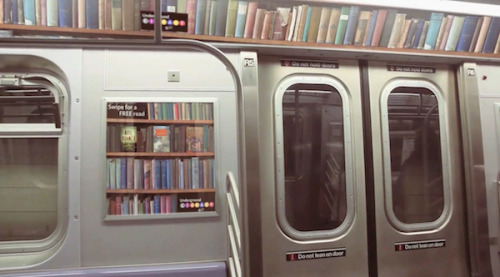
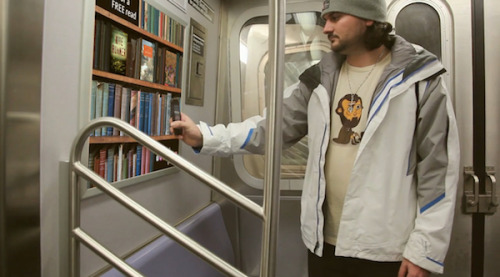
This subway library has posters of books and scannable barcodes—zap 'em with your phone to get a 10-page preview while you ride!
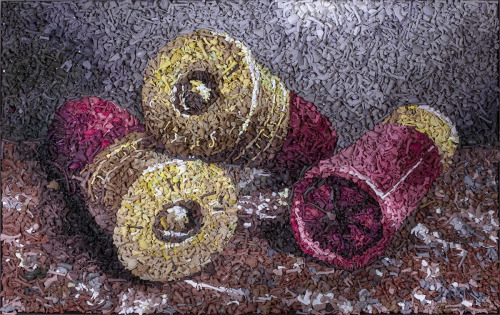
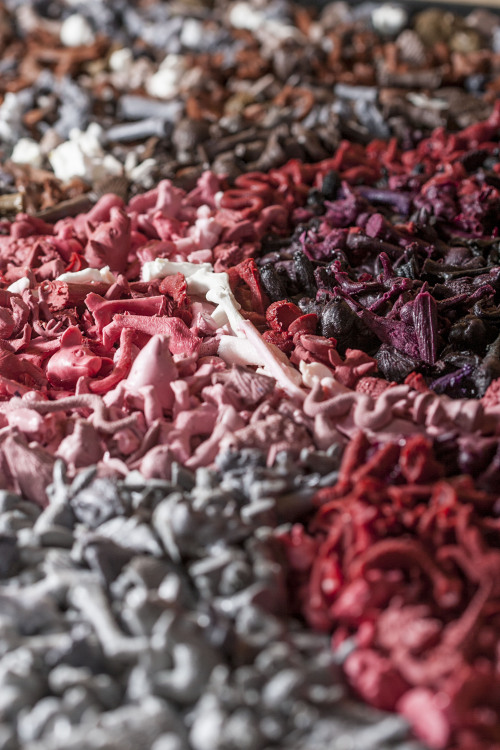








Killing Field, Mosaic Shotgun Shell Portrait Made of Tiny Animal Objects



I'm really enjoying these kinetic sculptures by artist Laurent Debraux who works primarily with magnets, metallic objects and ferrofluid. The artist was just exhibiting at the Kinetica Art Fair in London and if you missed it head over to YouTube channel where you can catch over 30 videos of his work.









Los Carpinteros is a Havana-based artist collective currently comprised of Marco Castillo and Dagoberto Rodríguez (a third member, Alexandre Arrechea, left in 2003) who produce a wide range of works including sculpture, installation, and film. My favorite of their works are these lovely abstract paintings of Legos and other structural or architectural pieces. Via Sean Kelly Gallery:
Interested in the intersection between art and society, the group merges architecture, design, and sculpture in unexpected and often humorous ways. They create installations and drawings which negotiate the space between the functional and the nonfunctional. The group's elegant and mordantly humorous sculptures, drawings, and installations draw their inspiration from the physical world—particularly that of furniture. Their carefully crafted works use humor to exploit a visual syntax that sets up contradictions among object and function as well as practicality and uselessness. For Los Carpinteros, drawing has played an integral role as a mock technical draft or form of a blue print that suggests not only a process of artistic elaboration but also a form of architectural or carpentry plans.
You can explore over 100 of their paintings in high resolution on their website, and don't miss this interactive 360 degree walkthrough of an exploded room at Hayward Gallery in 2008. (via faith is torment)





It's hard to visit an art or design blog these days without spotting the illustration work of Estonian artist Eiko Ojala, his Naked series is a great place to get started. The artist works digitally without the aid of 3D software where he draws everything by hand to create landscapes, figures and portraits that look as if they've been cut from paper. Most critical are the placement of shadows which Ojala also draws by hand, though via email he admits the complexity occasionally requires the use of photographed shadows which he then incorporates into the illustrations. His latest work is this beautiful Vertical Landscape which is easily one of his most accomplished pieces and I think bodes well for this young illustrator's career. Wouldn't you love to see this in motion? (via behance)

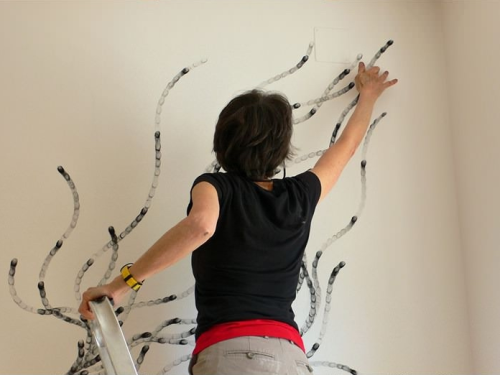
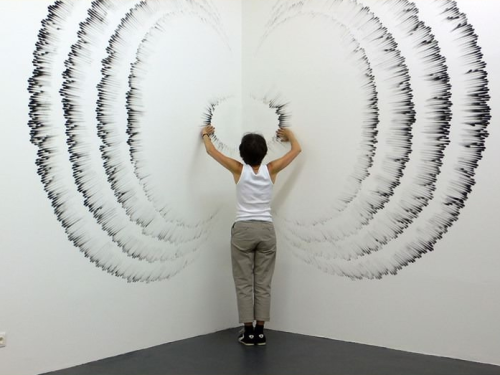
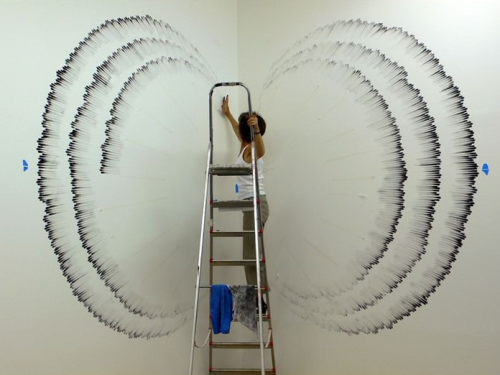
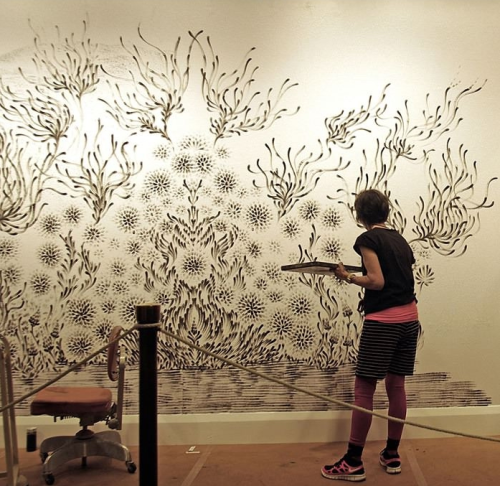
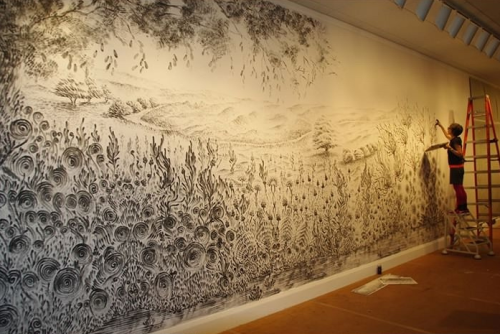
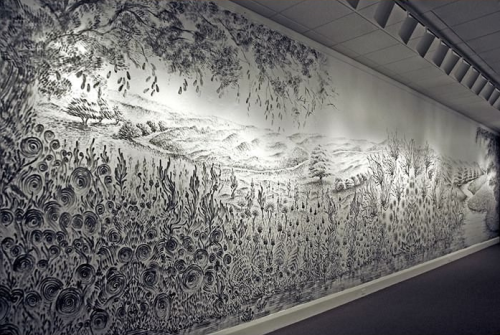

devildoll:
are you fucking kidding meHow
the fuck